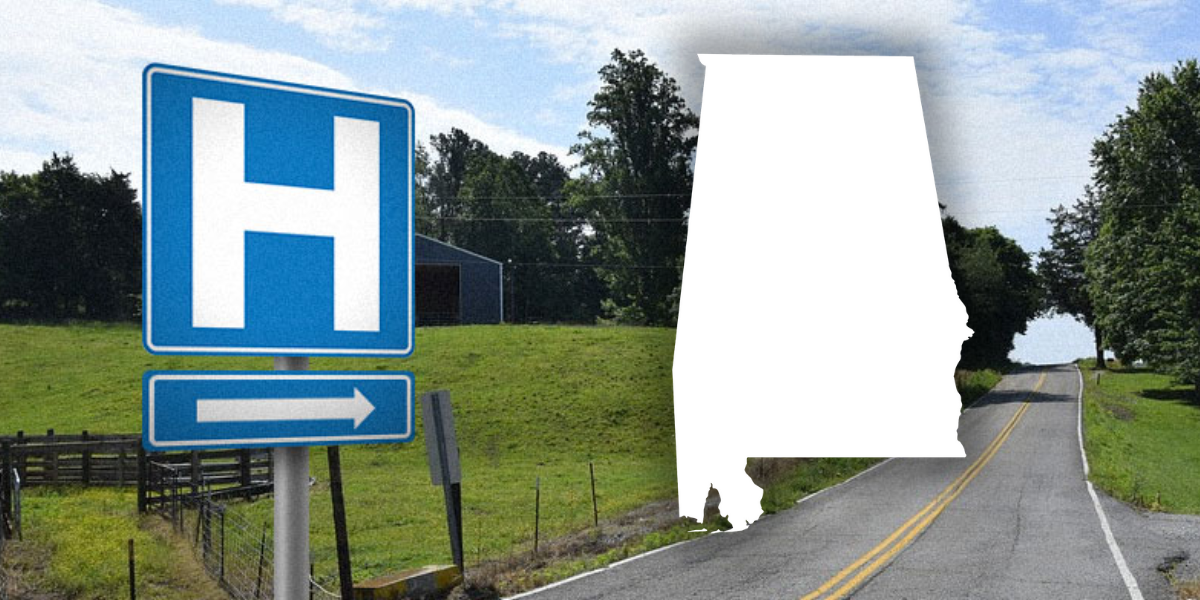On Thursday, Governor Kay Ivey announced Alabama has officially submitted its plan for the federal Rural Health Transformation Program (RHTP) to the Centers for Medicare & Medicaid Services.
Today’s handoff follows Congress’s July passage of the One Big Beautiful Bill which included a provision standing up a new $50 billion program to help states strengthen care in rural America.
U.S. Senators Tommy Tuberville (R-Auburn) and Katie Britt (R-Montgomery) touted major rural-health wins in the package, which included the creation of the new state-by-state funding mechanism high among them.
The program puts Alabama in line for a slice of a $50 billion federal fund aimed specifically at rural health system redesign. It includes roughly $10 billion per year for five years, with initial awards slated by the end of 2025.
Ivey said today’s milestone in submitting Alabama’s plan is “critically important” for rural communities across the state.
“As someone from Wilcox County, making meaningful improvements in how we deliver health care in rural Alabama is critically important to me. Thanks to President Trump’s One Big Beautiful Bill, states have an opportunity to make transformational change that will benefit citizens and communities for generations,” Governor Ivey said today.
“Making America Healthy Again begins in rural America, and I look forward to the state and federal governments working together to improve health care across the state.”
According to the state’s plan, the Alabama Rural Health Transformation Program centers on 11 coordinated initiatives designed to make rural facilities more financially viable, expand access, and improve outcomes by using telehealth, shared services, and workforce pipelines.
According to the plan, an estimated 1.6 million Alabamians live in the state’s 58 rural counties and Alabama’s rural hospitals face some of the nation’s highest closure risks.
The Alabama Rural Health Transformation Program includes 11 initiatives:
- Collaborative Electronic Health Record (EHR), IT & Cybersecurity Initiative
- Rural Health Initiative (telehealth/tele-consult network)
- Maternal and Fetal Health Initiative (digital regionalization and telerobotic ultrasound)
- Rural Workforce Initiative
- Cancer Digital Regionalization Initiative
- Simulation Training Initiative
- Statewide EMS Trauma and Stroke Initiative
- EMS Treat-In-Place Initiative
- Mental Health Initiative (including school-based tele-mental health and CCBHC expansion)
- Community Medicine Initiative (mobile wellness & nutrition)
- Rural Health Practice Initiative (including dental access)
Under the plan, ADECA would run ARHTP once CMS awards funding and will publish rules and application details for providers and other eligible recipients.
The state also intends to pursue complementary policy changes, such as telehealth parity, EMS treat-in-place reimbursement, cross-facility credentialing and data-sharing.
That same process will stand up an ARHTP advisory group by executive order to drive those reforms on a defined timeline. According to the governor’s office, those awards from CMS are expected to be announced by year’s end.
According to the plan, implementation would focus on these areas:
- Digital care and hospital networks: Regional “hub” hospitals would support rural facilities with secure, shared IT and cybersecurity services, interoperable EHRs linked through Alabama One Health Record, and on-demand specialty tele-consults to reduce unnecessary transfers.
- Maternal & fetal care: A statewide obstetric digital regionalization model would connect rural clinics to maternal-fetal specialists, deploy telerobotic ultrasound, and expand emergency L&D carts so providers can stabilize moms and newborns until transfer, addressing gaps created by rural L&D closures.
- Emergency response: The plan scales EMS diversion/routing for trauma and stroke and pilots “treat-in-place” so medics can resolve low-acuity calls on scene with tele-consult support — keeping ambulances available for true emergencies and easing ER crowding.
- Behavioral health: Alabama would help community mental health centers convert to Certified Community Behavioral Health Clinics and seed school-based tele-mental health in rural districts to reach students and families earlier.
- Cancer screening & prevention: Building on Alabama’s cervical-cancer “Operation Wipe Out” model, the state would regionalize and mobilize screenings to catch disease earlier in hard-to-reach communities.
ARHTP’s workforce component would expand rural GME slots, EMS and nursing pipelines, and specifically tap into the new Alabama School of Healthcare Sciences in Demopolis to train homegrown talent for rural service.
The ARHTP was developed by a core team, including the Governor’s Office, the Alabama Department of Economic and Community Affairs (ADECA), the Alabama Department of Finance, the Alabama Medicaid Agency and the Alabama State Health Planning and Development Agency.
Governor Ivey also sought input from dozens of stakeholders around the state and established a 20-person workgroup of healthcare experts and lawmakers to help inform the process and develop the plan.
“My team left no stone unturned as it gathered information to submit our plan,” Ivey said.
“It is a thoughtful, strategic plan that must be coupled with state policy changes to maximize effectiveness. Once implemented, the initiatives and policy changes will make meaningful improvements to healthcare in rural Alabama. They will help fulfil President Trump’s goal to Make America Healthy Again, and I have no doubt they will help Alabamians become healthier.”
ADECA will publish program rules and application guidance after CMS issues awards.
Providers, EMS agencies, mental-health organizations, rural clinics and hospitals, and community partners will be able to apply under the 11 initiatives once timelines are finalized.
Grayson Everett is the editor in chief of Yellowhammer News. You can follow him on X @Grayson270.













